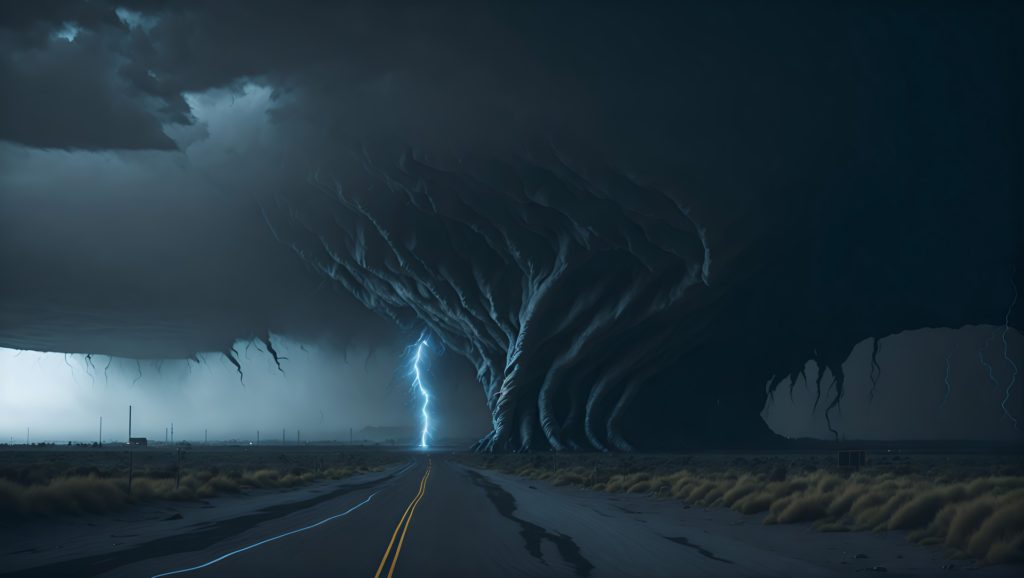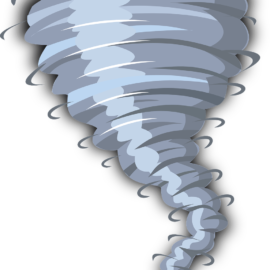
There is a link between climate change and tornadoes. Since we are getting the in the South East we need to know what we are doing.
The link between warming global temperatures and extreme weather is clearest with unprecedented heat waves and extraordinary amounts of precipitation. While it’s harder to identify the relationship between climate change and tornado outbreaks — such as the ones that killed more than two dozen people across the central United States on Friday — scientists saythere are reasons to believe a connection exists. There is “ample evidence” of increasing tornado risks during less typically stormy seasons, for example, said John Allen, an associate professor of meteorology at Central Michigan University. This winter brought record tornado activity across much of the South. And new research suggests that as average temperatures rise, the sorts of intense storms that frequently spawn tornadoes are becoming more common outside parts of the Midwest known as “tornado alley.” A recent study forecast that by 2100, the average annual number of supercells — massive, rotating storms known for producing the most severe tornadoes — to hit the eastern United States will increase by 6.6 percent. That suggests more tornadoes may be likely, too. But scientists aren’t ready to declare that yet. “There is nothing concrete to say, ‘Yes, we’re going to see more tornadoes,’” Allen said.
washingtonpost.com
These are the factors that cause tornadoes.
Average global temperatures have risen more than 1.1 degrees Celsius (2 degrees Fahrenheit) since the late 1800s, and the impact is clear: Warmer air provides more energy for storms to develop and intensify, and holds more moisture, which can also fuel storms. Warm, moist air is a key ingredient for developing severe tornadic storms. Such storms arise from too much instability in the lower atmosphere — a clash between warm and muggy air close to the ground and cooler, drier air on top of it. Storms form as a way to restore equilibrium in the atmosphere. In practice, it means warm air rapidly rises into the cold layer above it, while cold air rushes toward the ground. This movement is what triggers precipitation, as moisture in the warm air condenses, and it can also produce rotation within storms — which can turn into tornadoes. A warming climate means more of that instability, Allen said. The warmer the air is closer to the ground, and the greater the temperature difference with the air above it, the more likely it will rise and stir violent atmospheric clashes.
We have had a longer season and the shift to the mid west and south east is new.
A warming climate doesn’t necessarily change much about the potential for summer storms, when hot and muggy conditions make afternoon storms more common, said Harold Brooks, a senior research scientist at the National Severe Storms Laboratory in Norman, Okla. But it is likely to have an impact at times of year and in parts of the country where temperatures have historically been too cold to produce severe storm activity, he said. Tornadoes can happen at all times of the year in parts of the United States. But the traditional tornado season occurs from March through May and, to a lesser extent, in October and November — times when weather is in a period of transition, and differences in air temperature and moisture levels are more likely. Increasingly mild U.S. winters mean the atmospheric instability necessary for tornadic storms may be present more often in early spring and late fall. A study published in January in the Bulletin of the American Meteorological Society found that could translate into 61 percent more supercells in March and 46 percent more of them in April. It also found increasing tornadic storm risks in the Southeast, with decreasing chances in states such as Oklahoma and Kansas. The researchers developed the predictions by modeling storm activity based on warming projections for the coming decades. Walker Ashley, the study’s lead author and a professor of meteorology and disaster geography at Northern Illinois University, told the Associated Press he believes this shift is already underway. “The data that I’ve seen has persuaded me that we are in this experiment and living it right now,” he told the AP three days before an EF-4 tornado killed more than two dozen people in Mississippi. “What we’re seeing in the longer term is actually occurring right now.”
It is not all tornado as there are some things that reduce their frequency.
There are potential factors limiting storm and tornado development, however. Another ingredient important for tornado development is known as vertical wind shear — differences in wind speeds at varying altitudes. Higher levels of shear — meaning bigger differences in wind speeds — help storms organize into supercells and develop the rotation needed for tornadoes. Wind shear is expected to decrease as a result of climate change, said Kimberly Hoogewind, a research scientist at the University of Oklahoma. It is driven by a contrast between warm air close to the equator and cold air in the Arctic, she said, and this gap is narrowing as polar regions rapidly warm. And then there is a phenomenon meteorologists refer to an atmospheric “lid” on storms. If the layer of air a mile or two above the ground becomes too warm, then too much energy is required for hot and muggy air beneath it to rise up and trigger storms. Climate change could make that lid effect, known as convective inhibition, stronger. Still, it’s not clear if those influences will mean fewer tornadoes. As long as wind shear and convective inhibition allow storm development on days when storm fuel is present, then tornado risks will continue to occur, Hoogewind said. “The jury’s still out on this,” she said.
Tornado trends are had to predict.
A central challenge complicates any analysis of what could drive or inhibit tornado formation: As ferocious as they can be, tornadoes are tiny phenomena compared with the scale of planetary warming. Complex models are used to project future weather in a changing climate. And while they can give a reasonable sense of how averages and extremes will shift, it is difficult to translate that into something taking place over just a few miles, if not a matter of feet. “They’re on such a small scale, we don’t even know how to think about them on the climate scale,” Brooks said. “It’s fundamentally hard.”
We have had them here and the areas north and east of us have had more.



